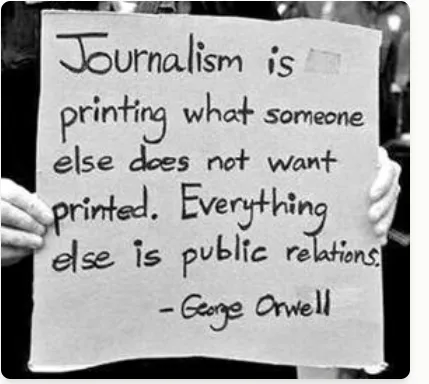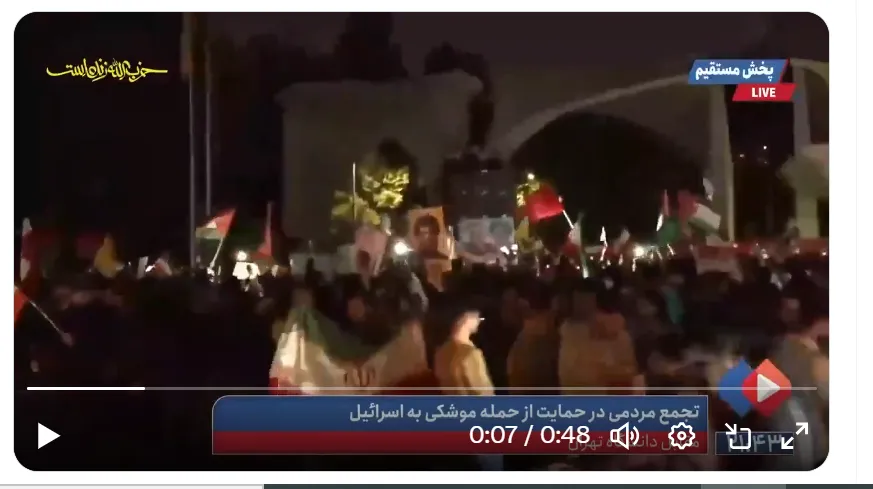
Disclaimer - when this article uses word combinations like "Iran cruise missiles successfully hit," it is not an endorsement of Iran. This article criticizes US Media and then goes on to estimate the amount of Silver consumed for just one weapon.
Now Envision the colossal scale of over 251 wars since 9-11, including unfortunate events like "shock and awe" that lasted for weeks, months, and years (or wars that last 20 years like Afghanistan), in terms of drained resources, death, destruction, money wasted. For more data on Silver’s use by the military visit SilverWars.org
 Margaret Brennan opened the
Margaret Brennan opened the so-called “Debate” with the most Orwellian and Surreal statement.
She said something to this effect ( I’m paraphrasing):
“Iran just launched its largest attack yet on Israel earlier that day, which failed due to joint US and Israeli defensive action. Iran could develop a nuclear weapon in one or two weeks.”
Then she continues with this insane leap in logic (a false conclusion)
"Governor Walz, if you were the final voice in The Situation Room, would you support or oppose a preemptive strike by Israel on Iran? You have two minutes."
WTF? Who wrote this script? Lockheed Martin? Raytheon? Northrop Grumman?
Let’s break down this Orwellian whopper opener.
• The characterization of Iran's attack as "failed" is misleading. Iran successfully launched hundreds of missiles, with some reportedly hitting Israeli military targets.
• The statement downplays Iran's stated motivation for the attack, which was retaliation for Israel's assassination of Hezbollah leader Hassan Nasrallah.
• Describing Iran as "weakened" ignores its demonstrated capability to launch a large-scale missile attack against Israel.
• The framing of U.S. military deployment as solely preventative omits its role in supporting Israeli operations.
• The claim that Iran could develop a nuclear weapon in "one or two weeks" is unsubstantiated and appears to be fearmongering.
This opening by CBS shit hack war promoter Margaret Brennan (posing as a journalist) sets a biased tone for the debate, presenting a skewed view of the conflict that favors Israel and U.S. intervention while demonizing Iran
What really happened
Iran launched hundreds of ballistic missiles at Israel late on 1 October in a massive retaliatory attack that officials in Tehran say achieved direct hits on multiple military bases across the country.
“We targeted three military bases: Nevatim, which houses F-35 aircraft, Netzarim, which houses F-15 jets used in the assassination of [Hezbollah leader] Sayyed Hassan Nasrallah, and Tel Nof base near Tel Aviv with Fateh ballistic missiles,” the Islamic Revolutionary Guard Corps (IRGC) announced following the launch of as many as 400 missiles, including its first-ever use of the Fateh hypersonic ballistic missile.
The intertwining of defense contractors and media conglomerates raises serious questions about potential conflicts of interest in war reporting.
General Electric, a major defense contractor and manufacturer of aircraft parts and missiles used in various military operations, owned NBC for nearly three decades until 2013. Similarly, Westinghouse Electric Corporation, which had substantial defense contracts, owned CBS for a brief period in the mid-1990s. How might these ownership structures have influenced coverage of military conflicts?
Could the financial interests of parent companies in defense contracts have swayed editorial decisions or shaped the narrative around wars and military interventions? The potential for biased reporting or self-censorship on topics that might conflict with parent company interests is concerning.
Did these media giants, under the ownership of defense-related industries, provide truly objective coverage of wars and military operations, or did their reporting subtly promote conflicts that could benefit their parent companies' bottom lines?
Today, there are still significant connections between media conglomerates and the defense industry, though perhaps less direct than in the past. Here are some key points about the current situation:
-
Interlocking directorates: Many media companies and defense contractors continue to have overlapping board members, creating potential conflicts of interest.
-
Revolving door: There's a frequent exchange of personnel between media organizations, defense companies, and government agencies, blurring the lines between these sectors.
-
Financial interests: Major media companies often have investments in or are partially owned by entities with defense industry ties.
-
Advertising influence: Defense contractors are significant advertisers in many media outlets, potentially affecting coverage.
-
Expert commentators: Many military analysts and experts featured in media coverage have undisclosed ties to defense companies.
The consolidation of media ownership has exacerbated these issues by concentrating power in fewer hands. This can lead to:
• Less diverse perspectives on defense and foreign policy issues
• Potential self-censorship on topics that might conflict with parent company interests
• Increased risk of biased coverage favoring military interventions or defense spending
Iran celebrates the successful strikes on Israel

Iran’s missiles hit Israel’s Nevatim Air Base in the Negev.
-
Iran’s missiles hit their targets directly.
-
Unprecedented attack that debunked the myth of Israel’s air defenses.
-
Iran’s attack was a success
-
Their missiles had to bypass Israel, the US, the UK, and Jordan’s air defenses to be able to hit sensitive military bases deep in Israel.
-
The Cradle reports 90% hit, 10% blocked
See the video below, do these look like they are landing successfully or like CBS says DID NOT HIT?
Just like We have been lied to by CBS last night fake Silver advocacy groups like The Silver Institute and their clients lie to you about WHO USES THE MOST SILVER
Calculating the Silver in just one weapon.
This is just missiles and doesn’t count the hundreds of other weapons. Torpedoes use the most Silver
-
Conventional ballistic missiles: up to 1,000 troy ounces of silver each (conservative when you consider the total weight, see below)
-
Cruise missiles: up to 2,500 troy ounces of silver each (conservative when you consider the total weight, see below)
-
Hypersonic missiles: 5,000 troy ounces of silver each (conservative when you consider the total weight, see below)
Iran's Missile Arsenal
Iran's diverse missile arsenal includes:
-
Conventional ballistic missiles (e.g., Shahab-3, Kheibar Shekan)
-
Cruise missiles (e.g., Hoveyzeh, Ya Ali)
-
Hypersonic missiles (e.g., Fattah, Fattah-2)
Fattah Hypersonic Missile
The Fattah, Iran's first hypersonic ballistic missile unveiled in June 2023, has:
-
Range: Approximately 1,400 km (870 miles)
-
Speed: Claimed to reach Mach 13-15
-
Silver content: 5,000 troy ounces (based on the new information)
Total Silver Estimate
For a revised estimate, let's assume Iran has:
-
400 conventional ballistic missiles (1,000 troy oz silver each)
-
100 cruise missiles (2,500 troy oz silver each)
-
50 hypersonic missiles (5,000 troy oz silver each)
Calculation:
(400 x 1,000 oz) + (100 x 2,500 oz) + (50 x 5,000 oz) = 900,000 troy ounces of silver
Analysis
This new estimate shows a substantial increase in the total silver content of Iran's missile arsenal. The higher silver content in cruise missiles (2,500 troy oz) and especially in hypersonic missiles (5,000 troy oz) significantly boosts the overall silver usage.
The introduction of hypersonic technology, in particular, has dramatically increased the silver demand in Iran's missile program. Each hypersonic missile contains five times the amount of silver compared to a conventional ballistic missile.
It's important to note that this estimate is still speculative, as the exact number and types of missiles in Iran's possession are not publicly disclosed. The actual silver content may vary based on specific designs, technologies, and the true composition of Iran's missile inventory.
The weight of cruise missiles varies depending on the specific model and configuration. However, based on the search results, we can provide some typical weight ranges for cruise missiles:
Weight: Tomahawk Cruise Missile
The Tomahawk, one of the most well-known cruise missiles, has the following weight specifications:
-
Launch weight: 1,315 kg (2,900 lb) without booster
-
Launch weight: 1,600 kg (3,500 lb) with booster
Other Cruise Missile Examples
-
AGM-129A Advanced Cruise Missile:
-
Weight: More than 3,500 pounds (1,588 kg)
-
-
Long-range subsonic cruise missiles:
-
Typical launch weight: About 1,500 kg (3,300 lb)
-
-
Short-range subsonic cruise missiles:
-
Weight: Around 500 kg (1,102 lb)
-
